How do cycling shoes change as you spend more money?
We take a look at the tech behind cycling shoes, in partnership with Specialized

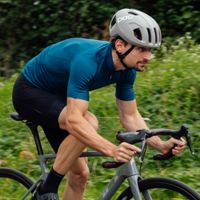
Promotional feature with Specialized.
With prices that can sometimes nudge even £450, cycling shoes certainly can be expensive, but the top shoes worth the price? What does that extra money buy you, comfort or performance – or both? And how significant are the differences between entry level cycling shoes and just standard trainers?
To help answer these questions and explain much more, we’ve partnered with Specialized, which is a leader in cycling shoe design and fit, thanks to its Body Geometry design principles. These have been developed through thousands of bike fits, allowing it to solve problems that affect both everyday cyclists and professionals alike.
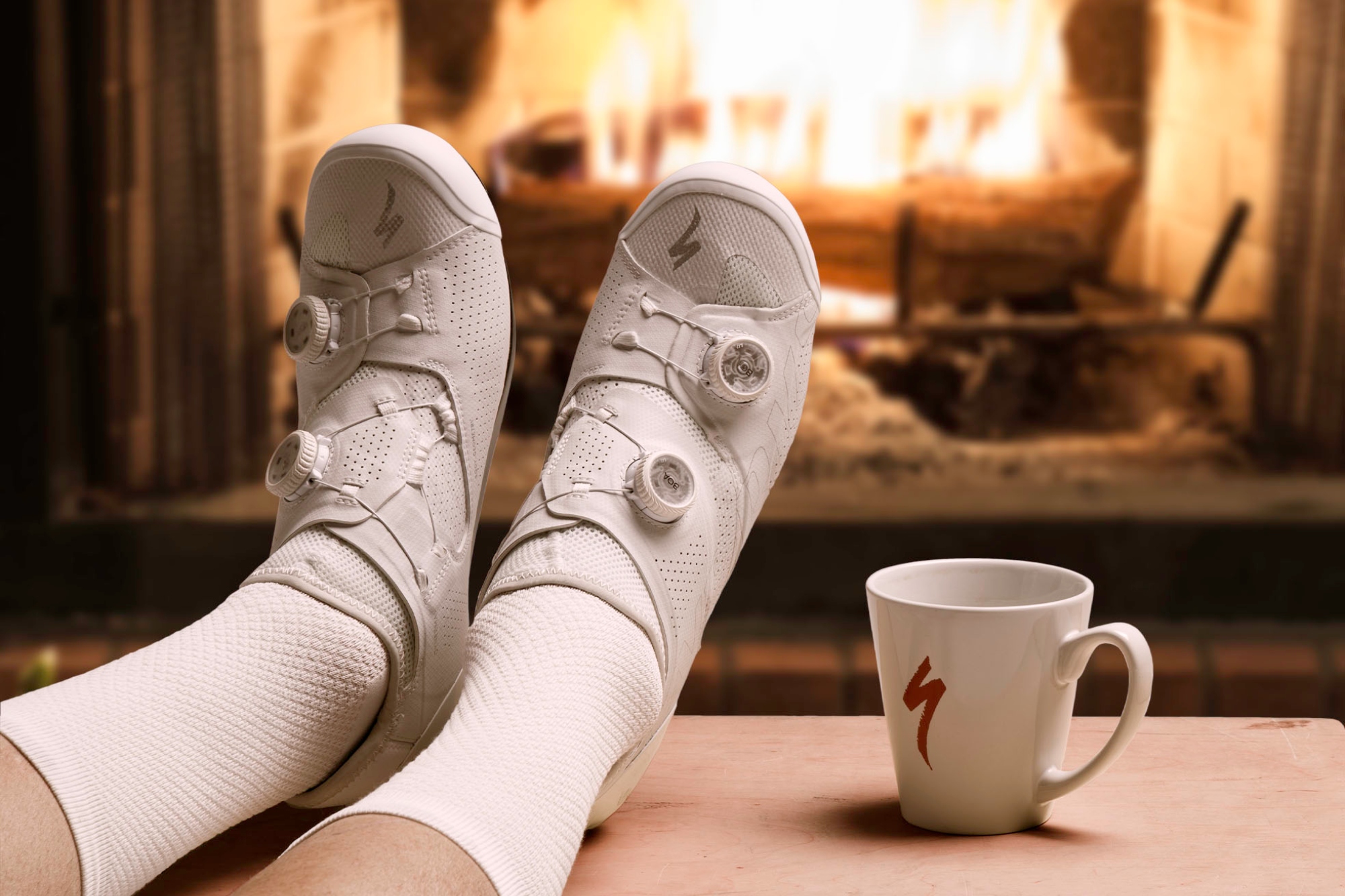
There are only three areas where you actually contact your bike: the bars, saddle, and pedals. Comfort in each of these areas is a major determinate of your cycling enjoyment and performance, so getting the right shoes for you is very important piece of the puzzle.
We’ll take you through the tech that makes up cycling shoes and what the differences are between the entry level, mid-range and the top-flite. Hopefully, you should come away with not only knowing how cycling shoes change as you spend more money, but also have an idea of what price point would suit you best.
The sole
This is one of the most important parts in the make-up of a cycling shoes sets them distinctly apart from other kinds of footwear. Whereas a running trainer has quite a flexible sole so that it can bend with your foot throughout the running motion, cycling soles are designed to be much, much stiffer.
This is to provide adequate support for your foot as you press down on the pedals, reducing the risk of injury. It also increases your efficiency – with less power being wasted in flexing the shoe, more gets transferred directly to the pedals, propelling you forwards.
Different materials are used depending on a range of factors; price point is certainly one, but so is application – some materials being better suited to certain kinds of riding.
Nylon
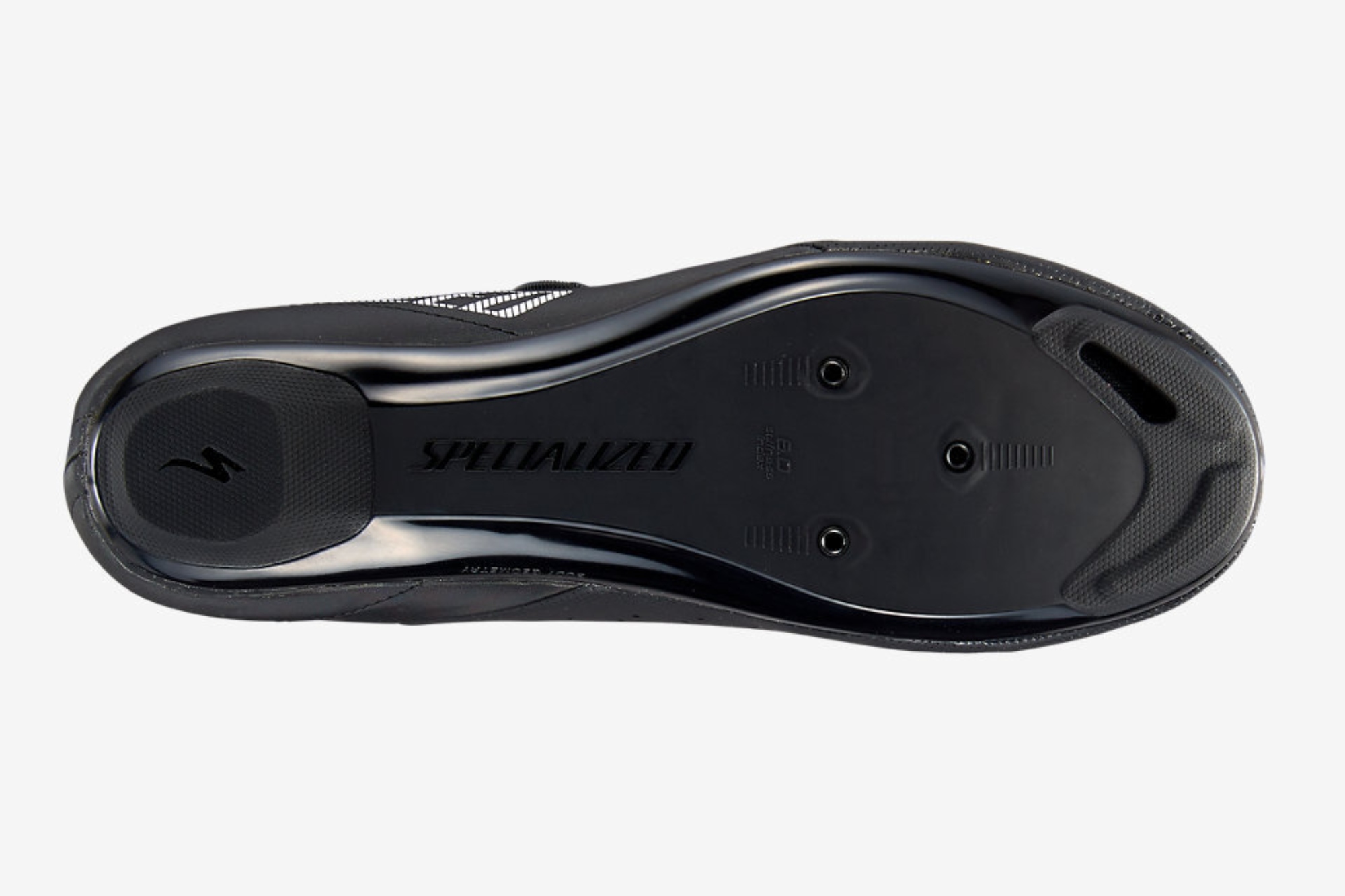
At the entry level, Nylon composite soles are very commonly used because of the great balance between stiffness, comfort, and cost.
These soles are firm enough to provide good support for your feet, helping to minimize the risk of injury and increasing the efficiency of your pedalling stroke. But in addition to that, Nylon composites also have good vibration dampening properties, making them comfortable for long rides and for those just getting started in cycling.
World-class ultra-endurance cyclists have been known to opt for Nylon soles exactly because of this combination of efficiency and comfort, with James Hayden – twice winner of the Transcontinental Race – being one of them.
Although Nylon soles may be cheaper to produce, they shouldn’t be overlooked as ‘inferior’ tech. Its properties can make Nylon soled shoes the unequivocal best footwear for certain applications and situations.
Carbon
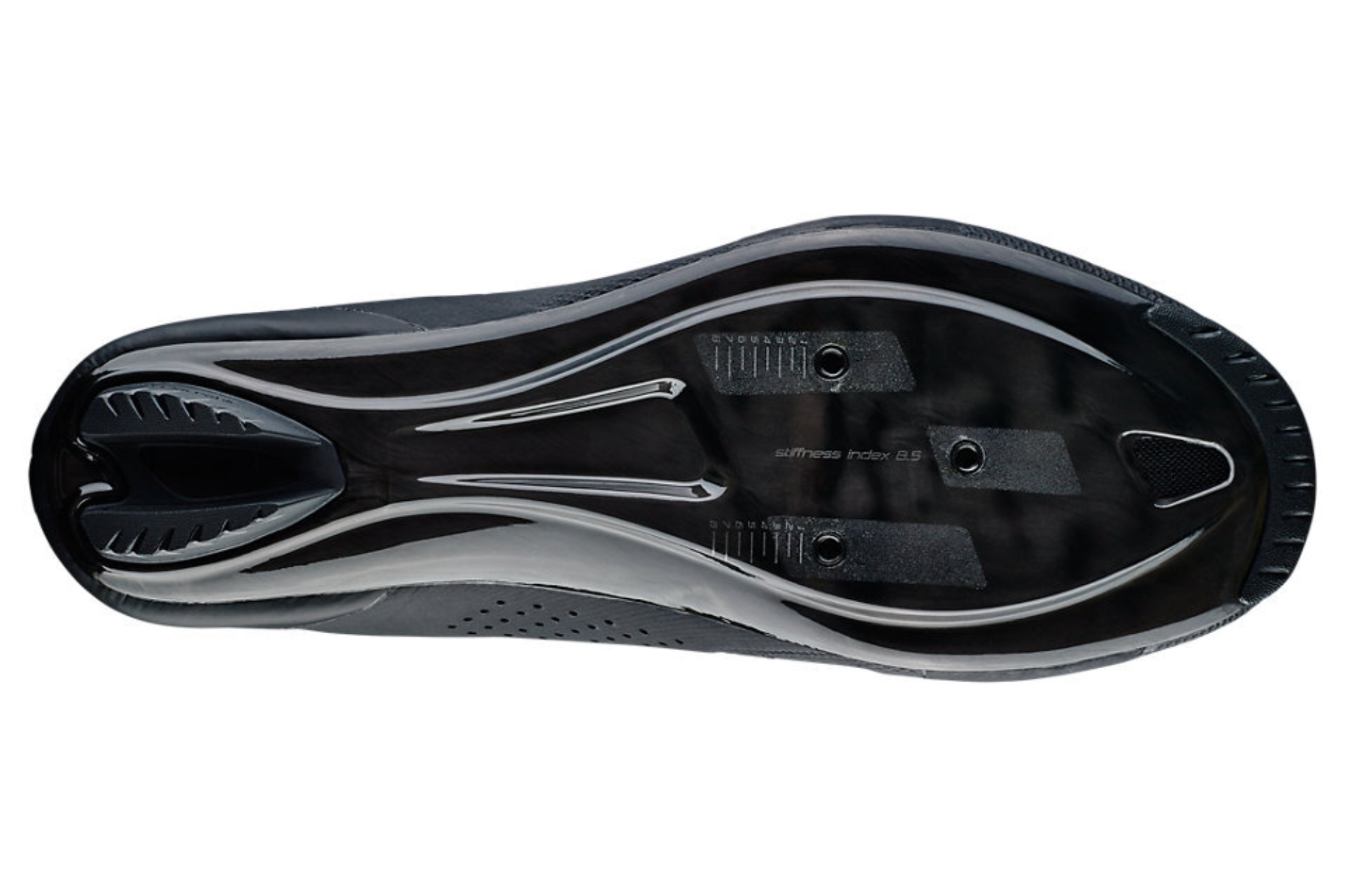
But for shorter distance racing, where the balance is tipped a little more in the favour of ultimate power transfer, carbon – as it does in so many areas in cycling – becomes the material of choice. Lightweight, but incredibly stiff, far fewer watts will be wasted by deflection of the sole. However, the use of carbon does raise the cost of the production, and is part of the reason behind the price of high-end shoes.
Additionally, as we move into the realm where every element must be optimised, weight reduction takes on a new focus. This is partly achieved simply by the use of carbon over Nylon, but it’s also a result of using the minimum amount of material possible – while still retaining the other qualities of the shoe.
To achieve this, Specialized uses pressure mapping to find where the majority of riders apply force when pedalling, which reveals the areas where less material could be used. The result is shoes which are significantly more shaped with lots of cutaway sections, and an overall lighter weight.
As you would expect, the use of more expensive materials and a more complicated manufacturing process has the effect of increasing the price. Shoes with this technology do end up being more expensive than the simpler Nylon soles.
It’s good to note that Specialized’s carbon soled shoes fall under its 5-year assisted replacement policy. This means that if you damage the shoes while out riding – and if it’s not already covered under warranty – Specialized will replace or repair them at a discounted price. This raises the base price of the shoes a little, but does stand to save you a lot money should you befall a mishap with your shoes.
Adjustment
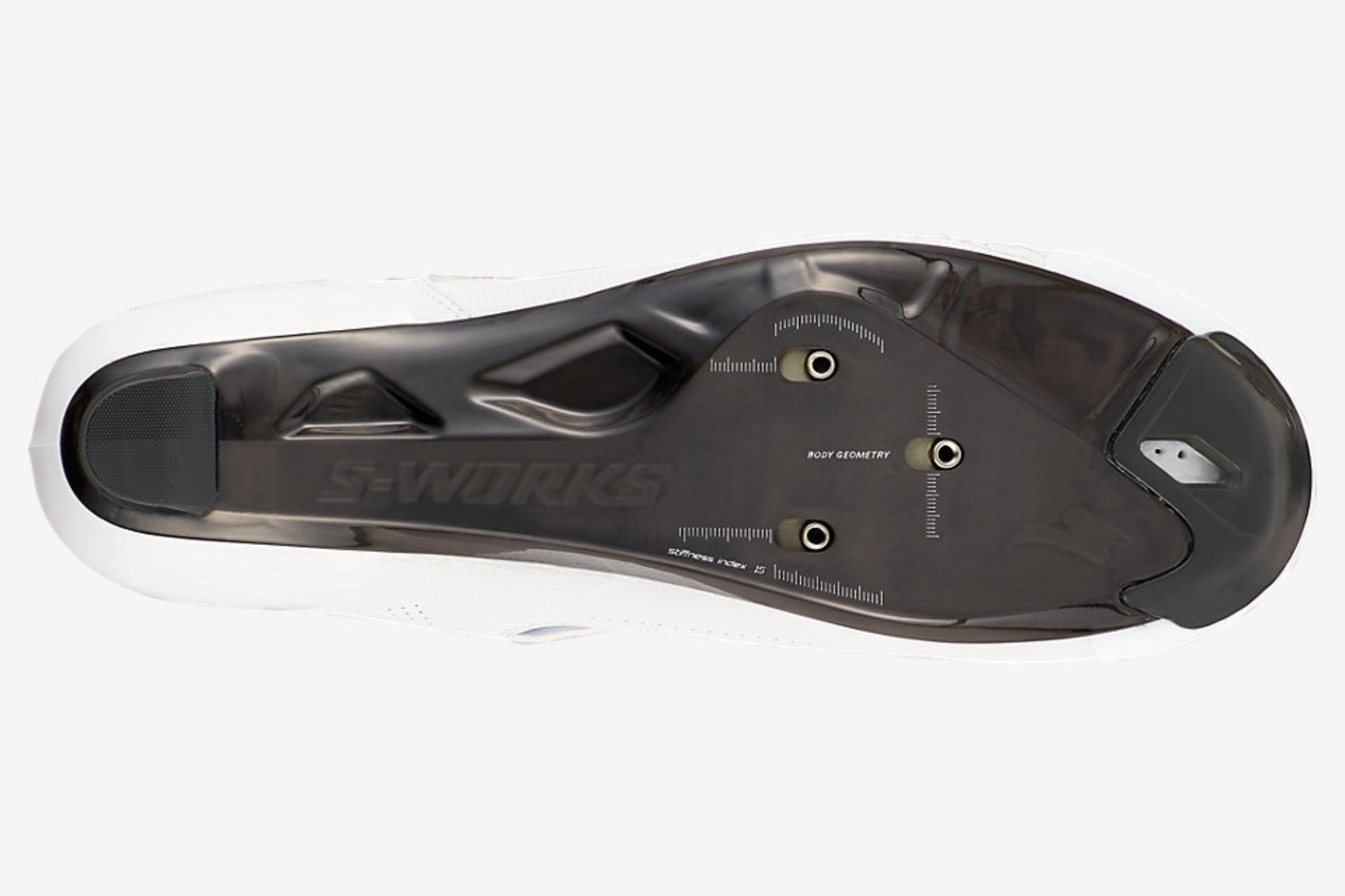
Another element which distinguishes top-end and entry-level shoes is the amount of adjustment available for cleat positioning.
This is the part that binds your shoes to the pedals, and so its placement will determine the exact location of your foot. The particular orientation that will suit you is a very personal matter and is determined by your bike position, range of motion, and simple preference of what part of the foot you prefer to push down on the pedals with.
In Specialized’s own range, the top end shoes allow for the greatest range of adjustment, provided by at a plate at the bottom of the shoe. Whereas the entry level – and even mid-range – models don’t come with this feature.
If your focus is on optimal positioning for top-level performance, this range of adjustment is something you might want to have. But if you are buying your first set of cycling shoes – and even for those who have had many – it’s most likely that the standard range of cleat adjustment will be sufficient.
The upper
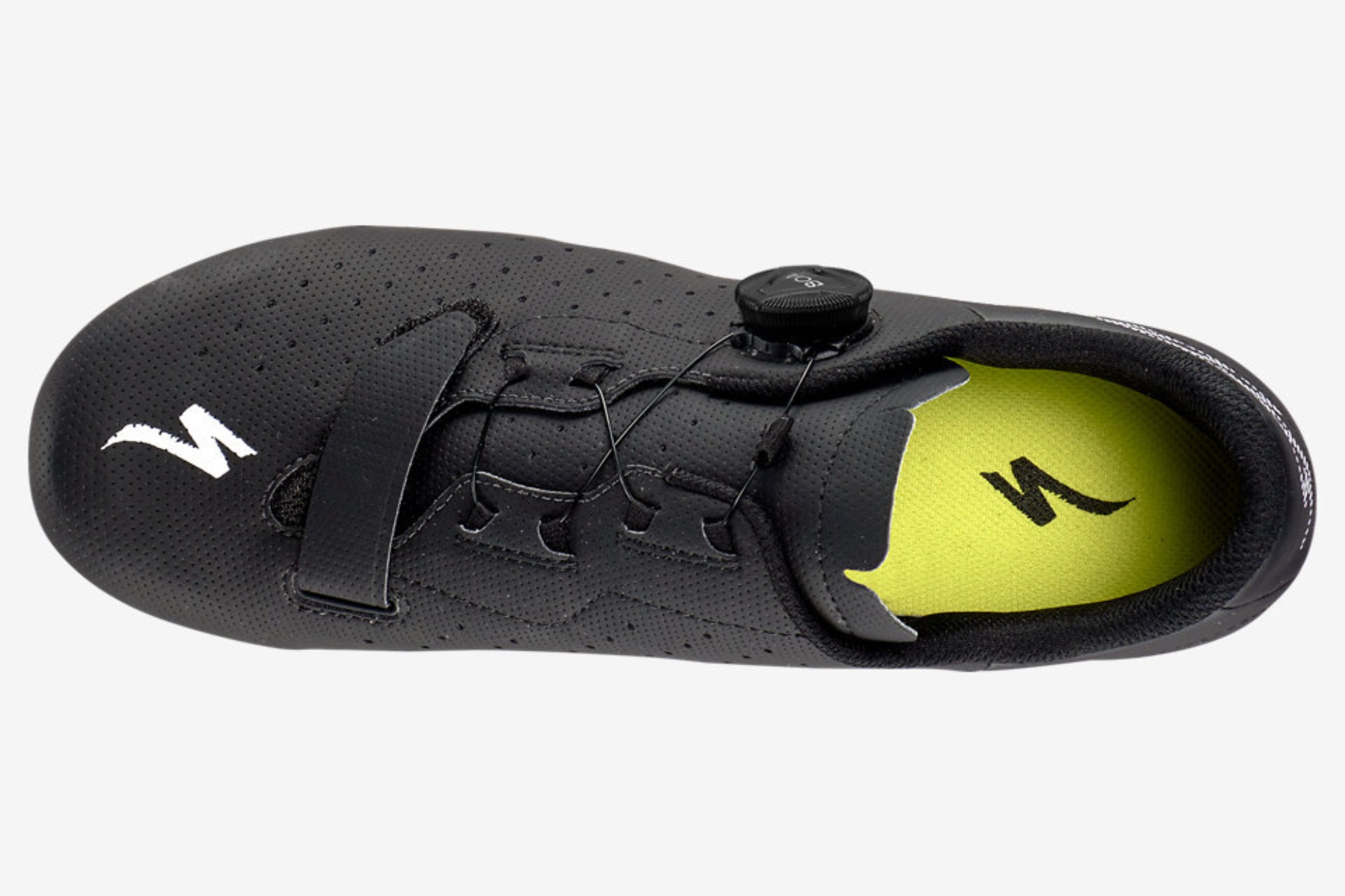
The upper is everything that is connected to the sole. It can be made from various different materials and surrounds the foot.
The main difference as you move through the price range is that the more money you spend, the more breathability you get. Lower priced shoes tend to have thicker padding and fewer vents cut into the material – which also results in a slightly heavier shoe.
As you move up through the range, the uppers become rather more slimmed down, less bulky in design and more sculpted. In being much thinner, breathability is consequentially improved – but in addition to that, there does also tend to be a greater number of vents.
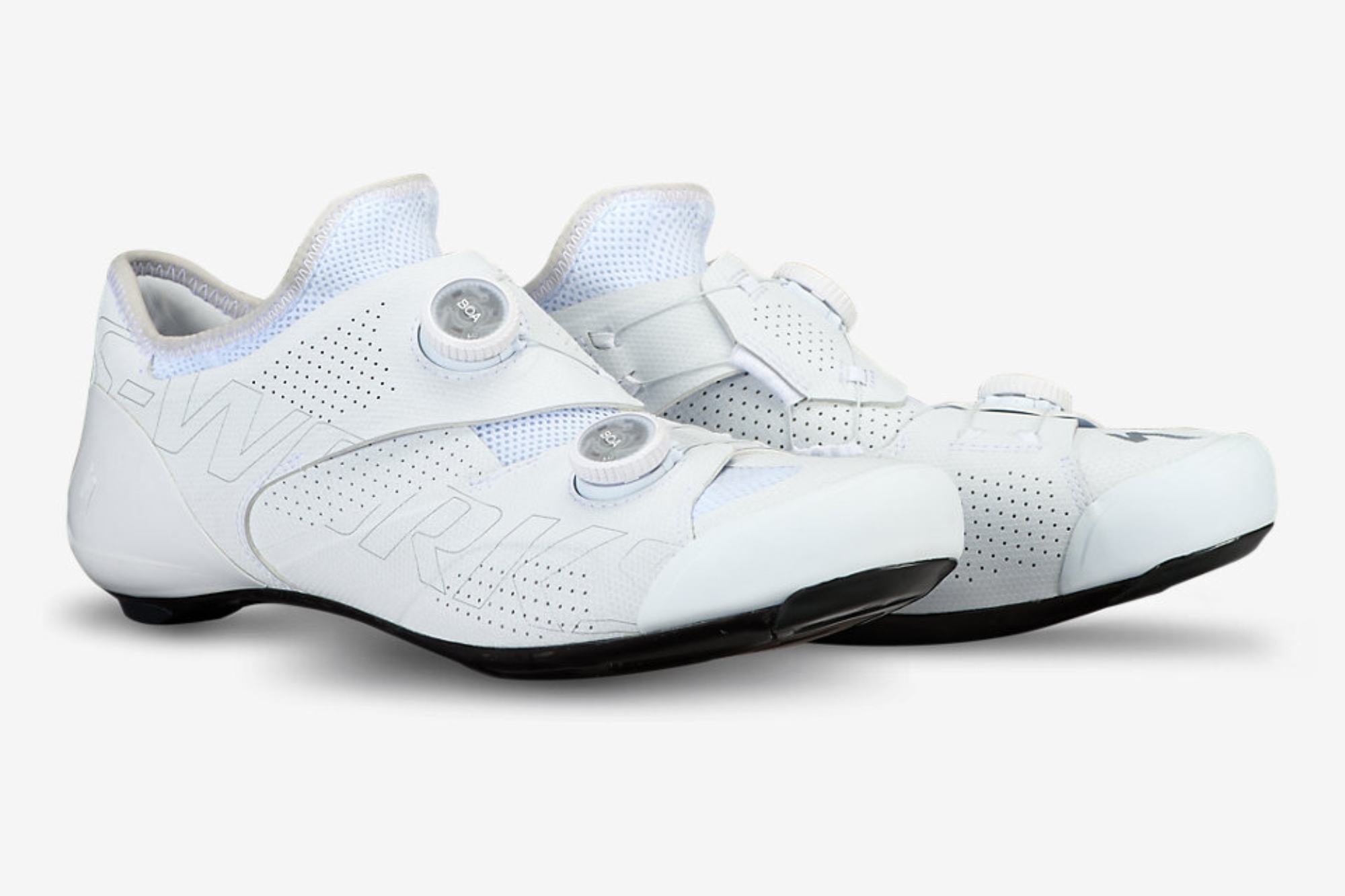
But, of course, that’s not to say that the top end shoes are bare bones without any padding and support. Like with the cutaways in the soles of the shoes, everything here is much more targeted. Rather than the padding encompassing of the whole of the material, the Ares, for instance, has padding placed in a very particular location within the heel cup. This provides comfort and also helps to lock your feet in place for ultimate security when sprinting hard, but only uses the precise amount of padding that’s required.
Naturally, it is the top end shoes that are where brands introduce the latest tech, and that is no different in Specialized range. The Ares shoes get a sock-like material rather than a traditional tongue. This has the benefit of reducing the number of interfaces where pinch points can occur – as well as lowering the weight. But although it’s called a sock, you should still also wear your own – which will surely relieve all the fashionistas out there.
Closure
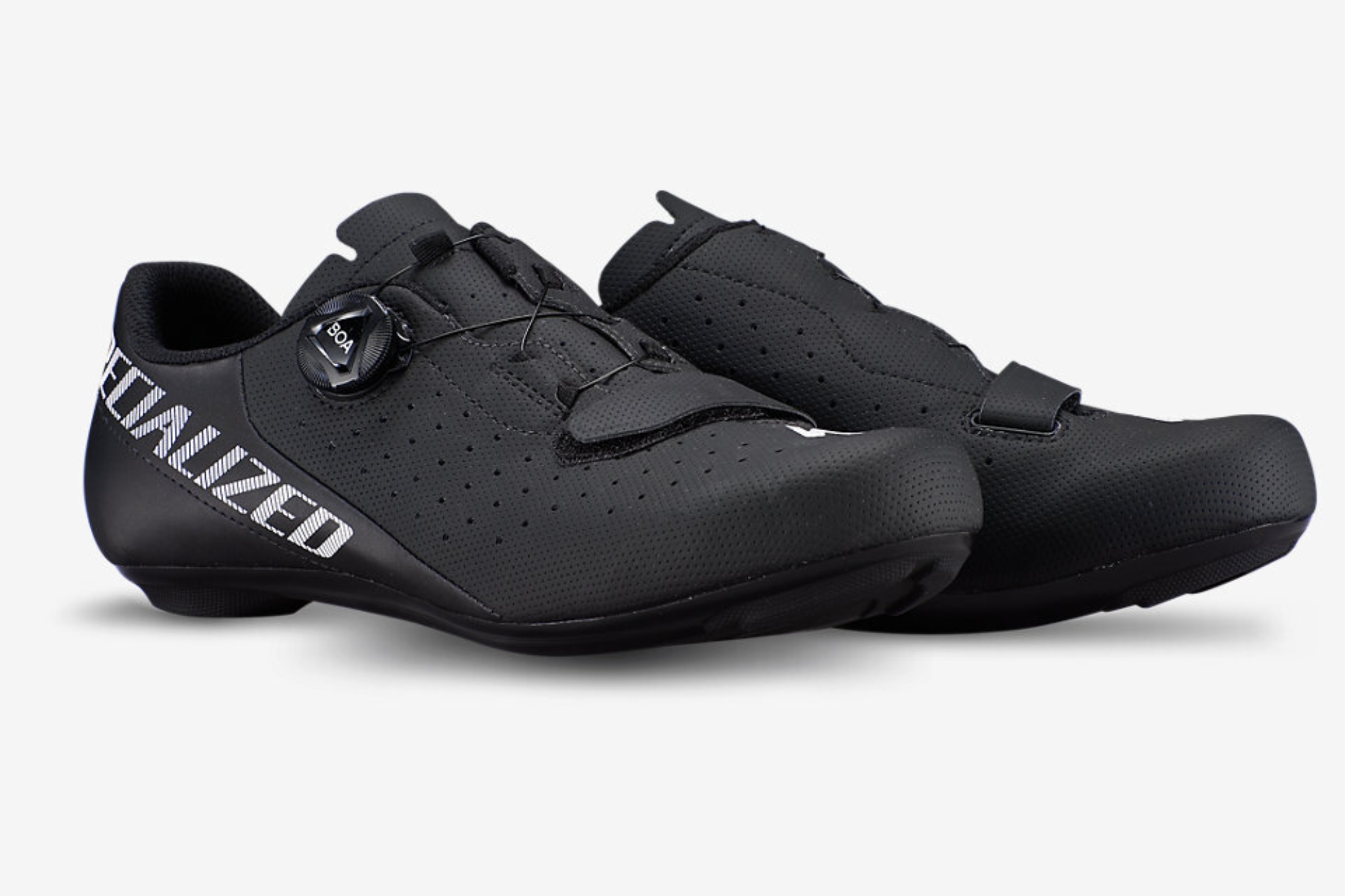
Usually, a shoe will close with either laces, Velcro, or dials. Laces have a timeless style about them and allow for lots of adjustability in the binding tension at the many eyelets. But Velcro shouldn’t be overlooked as a binding system. It is quick and simple to use, making it easier to get the tension just right. Although, it can be difficult to get Velcro done up super tight for that really locked in feeling when sprinting.
But these are largely giving way to Boa dials, particularly at the top end. These essentially combine the best parts of laces and Velcro. They are super quick and easy to use, allowing for adjustments on the fly – unlike with laces. With their wires, Boa dials can be done up as tight as you like, for the ultimate feeling of security when putting in an explosive effort.
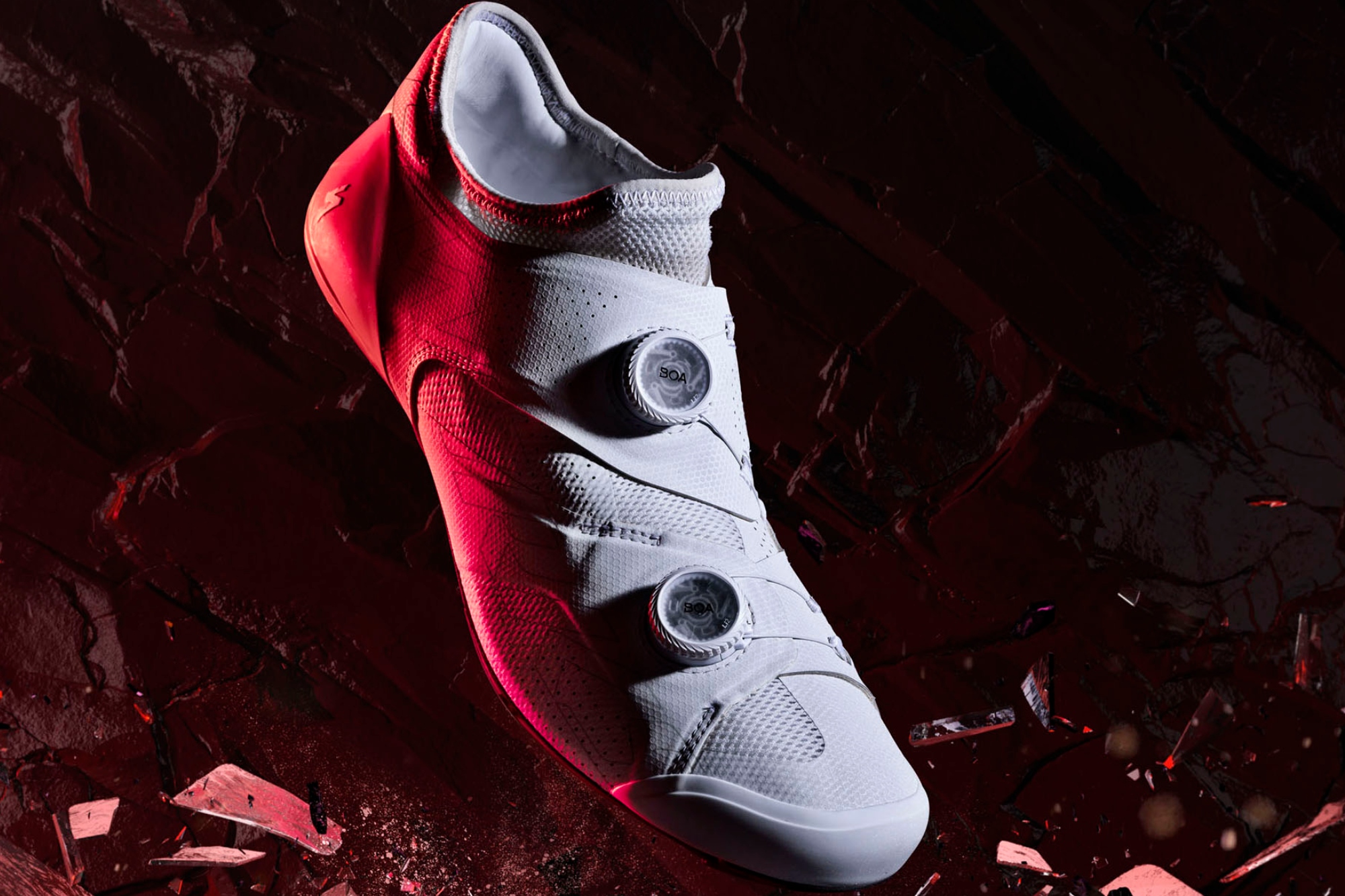
The Specialized Ares shoes get the top-end Boa Li2 dials. These can be tightened or loosened in 1mm increments allowing for precise fine tuning to get the perfect tension. This is unlike other Boa dials – such as the L6 – which has to be released completely and then tightened again if you want to make them slightly looser.
But it’s not just the binding system that changes as you go up the tiers, even the way the systems are actuated differs. The Ares shoes have a clever wraparound solution, which helps to secure the whole foot in place, rather than just pinching the top of the shoe together. This provides a more secure fit with the pressure more evenly distributed across the foot.
How do cycling shoes change as you spend more money?
All shoes benefit from Specialized’s Body Geometry design principles, although different features are also present throughout the range.
Torch 1.0
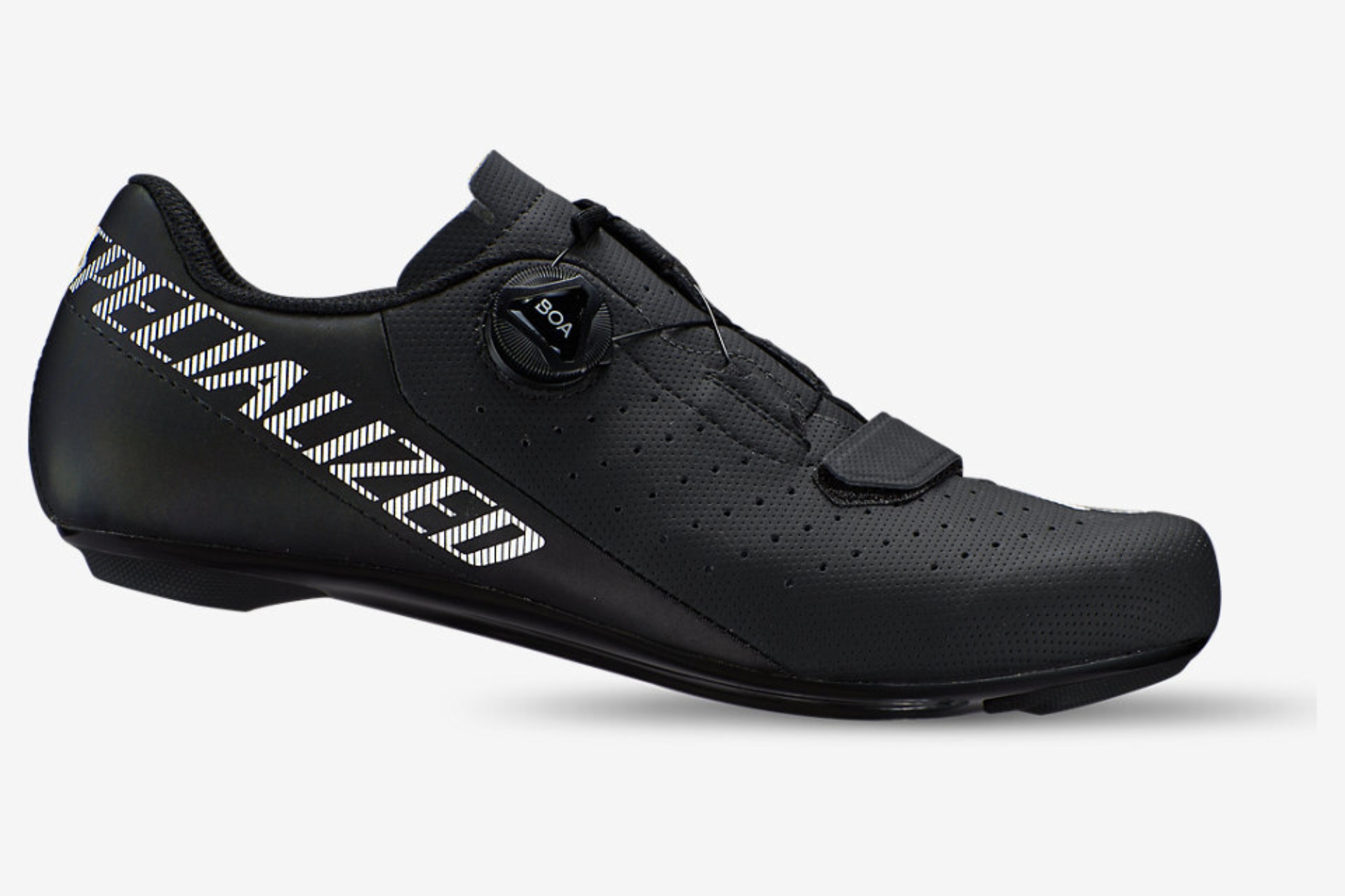
At £99.99, the Torch 1.0 is Specialized’s entry level road shoe. Although the price is lower, there has been no compromise on fit, with the same Body Geometry ergonomics of Specialized’s high-end shoes being applied here. The costs are largely saved by the use of different materials.
The most notable being a Nylon composite sole, rather than the carbon soles of the more expensive shoes. This is still plenty stiff enough for the majority of riders, providing efficient power transfer and a stable pedalling platform. For long distance riding, the vibration dampening properties of the Nylon sole could even be preferable over carbon.
The synthetic upper is perforated for breathability, although its slightly bulkier construction does add a little weight over the more expensive models. But on the flipside, this does make for a more robust shoe.
Although previously the preserve of the very top end, Boa dials can now be found even on the more affordable shoe lines, bringing easy adjustability and a secure fit to many more people. The model used is the cheaper L6 version, so it does only tighten in 1mm and to back off the tension it does have to be completely released and retightened.
Torch 3.0
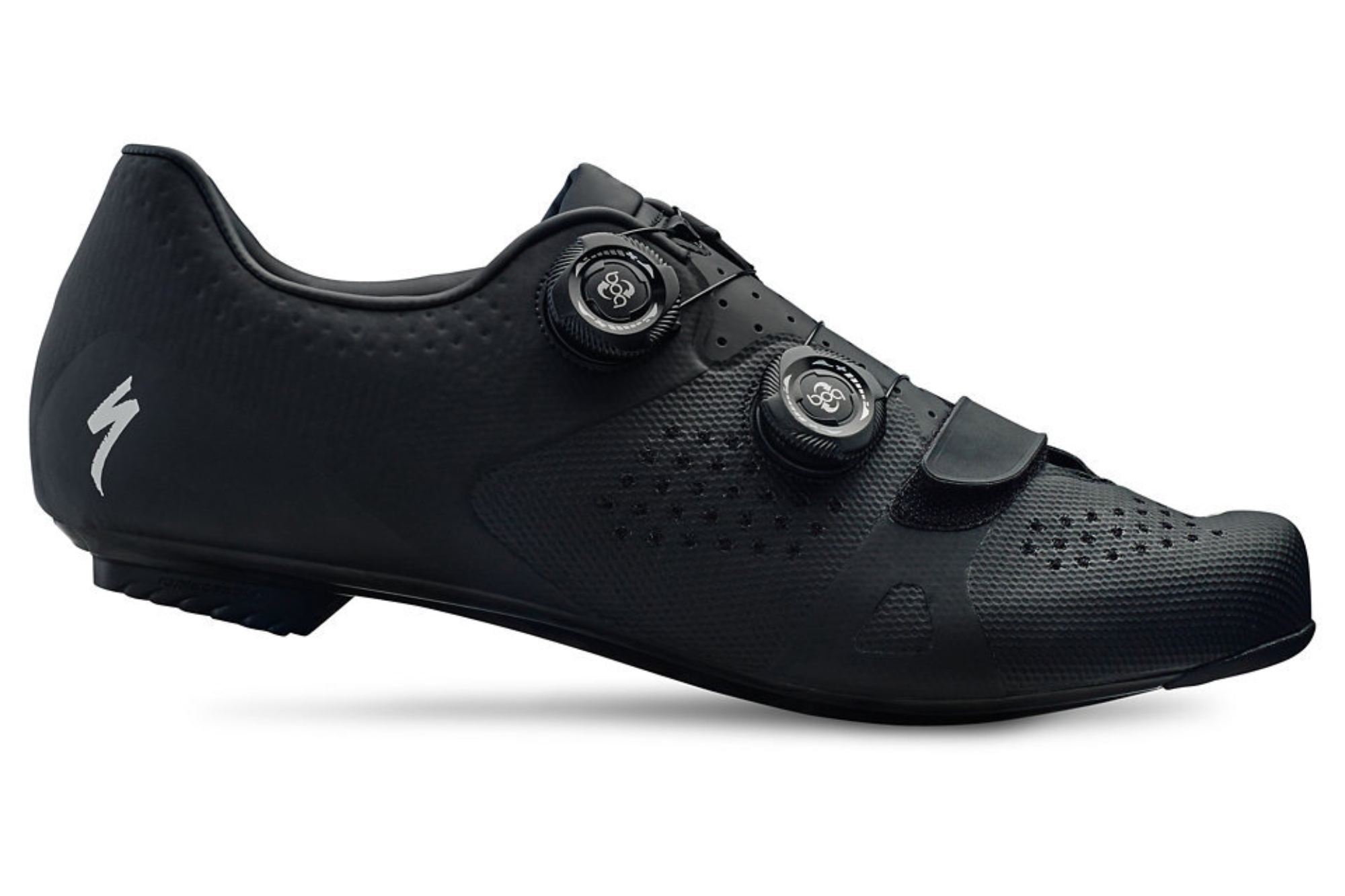
With the Torch 3.0, the design brief was to create shoe which embodied as closely as possible the performance aspects of a top-end shoe, but while keeping the price palatable, at £230.
A carbon sole increases the rigidity of the pedalling platform for a positive feel when pushing hard. Here, we start to see some cutaway sections where excess material is minimised, helping to keep the weight down.
Three materials are used in the make-up of the upper – TPU, mesh and synthetic leather – combining to increase breathability, while also playing a role in the weight reduction. In all, the Torch 3.0 shoes are 14% lighter than the Torch 1.0.
Two Boa dials are present on each shoe along with a Velcro strap on the toe box, making it easier to get that perfect binding tension. These dials are the S2-SV model, which allow you to both tighten and loosen in 1mm increments for easy on-the-fly adjustments.
S-Works Ares
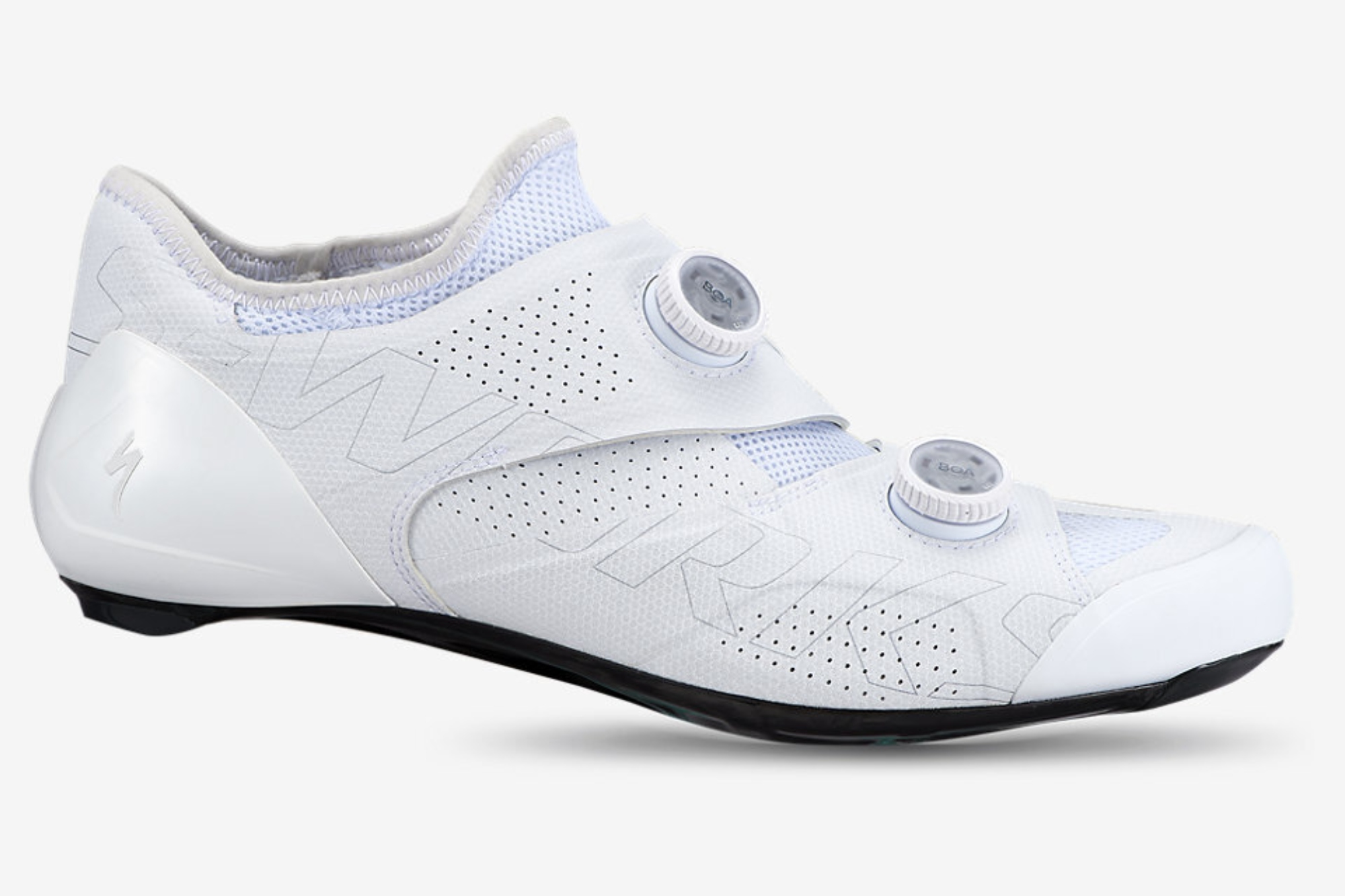
These are Specialized’s top-end shoes, developed in collaboration with Tour de France Green Jersey winner, Sam Bennett. At £375, they rank among the most expensive cycling shoes.
For this money, you get a sole which is not only Specialized’s stiffest, but also its lightest, with all excess material removed for the ultimate balance between power transfer and weight. There is also extra adjustability for fine tuning your cleat position, with 5mm of rearward movement in the titanium alloy cleat nuts.
In the upper, Dyneema fabric is used in combination with synthetic and TPU to maximise breathability, while also eliminating stretch to provide a secure hold on your feet. The feeling of being locked in place was one of the main priority from Sam Bennett, and to this end the heel cup incorporates specific padding to prevent any lifting when sprinting hard.
The Li2 Boa dials can both tighten and loosen in 1mm increments, while the routing of the binding wires has been completely redesigned to better distribute the pressure – with the result being a more secure fit that doesn’t pinch.
The approximate weight given by Specialized for a single shoe in size 42 is 220g, 11% lighter than the weight given for the Torch 3.0.
Are expensive cycling shoes worth the price?
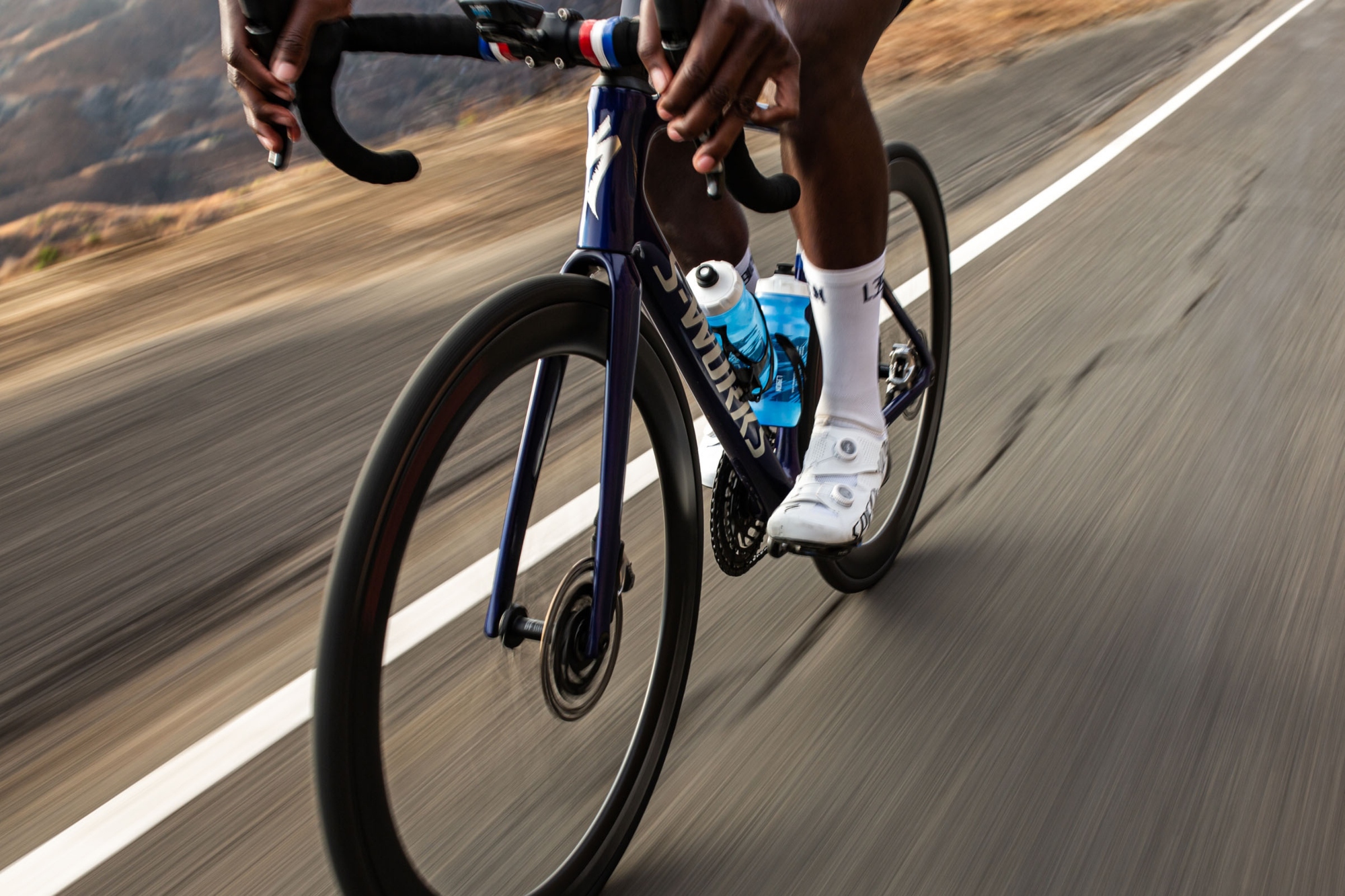
Really it depends on what your demands from a cycling shoe are. If all you want is something comfortable and supportive with good power transfer, then an entry level cycling shoe is all you’ll need. At around £99, these don’t present an unobtainable price.
But if you want to have better ventilation, even better power transfer, lightweight, and a more secure binding system, then something along the lines of the Torch 3.0 will be what you need to look for. They offer a real step up compared to the entry level, and so if you really are committed to higher performance, then these shoes are probably worth it.
But if you are unsure whether that is you, it’s probably a sign that the entry level cycling shoes would be a better value purchase.
At the top end, can the tech of the Specialized Ares shoes justify their price? Well, the price hasn’t been picked out of nowhere. It’s a result of the high-quality materials and their complex manufacturing. The carbon soles are extensively shaped for the best combination of power transfer and weight reduction, while the binding system has been completely redesigned to really hug in the feet. All these things cost money.
But whether paying for all this is really worth it, that ultimately depends on the application. If your cycling needs are completely fulfilled by the lower tiers, there really isn’t much here to be gained from going for the most expensive cycling shoes. But if you want the best that money can buy and all the performance benefits that go with it, then that is simply the cost and the question of worth is largely immaterial.
The latest race content, interviews, features, reviews and expert buying guides, direct to your inbox!

After winning the 2019 National Single-Speed Cross-Country Mountain Biking Championships and claiming the plushie unicorn (true story), Stefan swapped the flat-bars for drop-bars and has never looked back.
Since then, he’s earnt his 2ⁿᵈ cat racing licence in his first season racing as a third, completed the South Downs Double in under 20 hours and Everested in under 12.
But his favourite rides are multiday bikepacking trips, with all the huge amount of cycling tech and long days spent exploring new roads and trails - as well as histories and cultures. Most recently, he’s spent two weeks riding from Budapest into the mountains of Slovakia.
Height: 177cm
Weight: 67–69kg
-
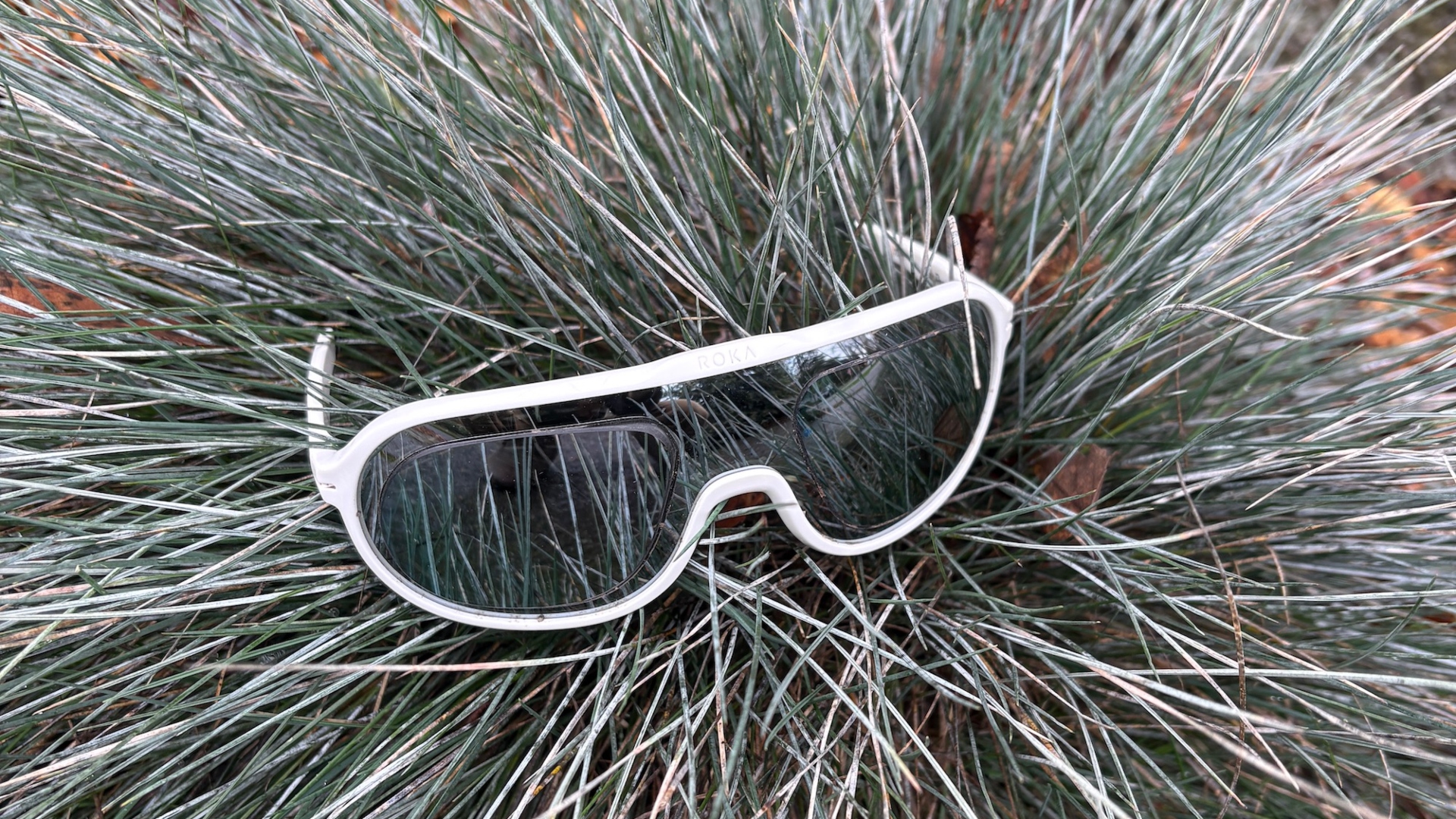 As a reviewer, I get asked about prescription cycling glasses more than any other gear — and the Roka San Remo sunglasses stood out in my latest test
As a reviewer, I get asked about prescription cycling glasses more than any other gear — and the Roka San Remo sunglasses stood out in my latest testAn impressively lightweight, full-frame sunglass design that’s stylish enough for everyday wear
-
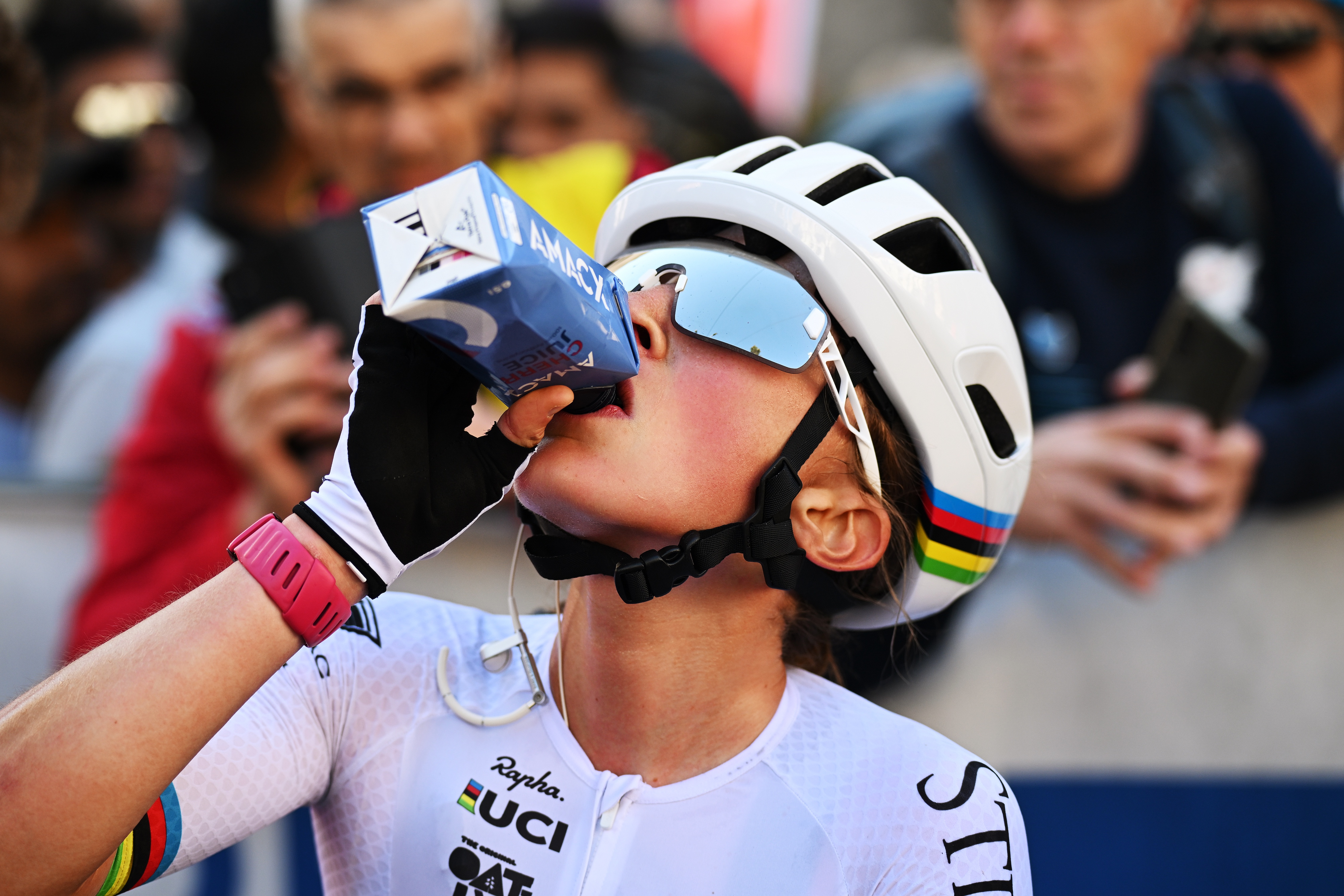 'When someone grabs your stomach every morning to show you’re fat, it gets into your head': the world champion's battle to regain a healthy mindset with food
'When someone grabs your stomach every morning to show you’re fat, it gets into your head': the world champion's battle to regain a healthy mindset with foodMagdeleine Vallieres reveals 'food blackmail' at past team and how she became obsessed with nutrition
-
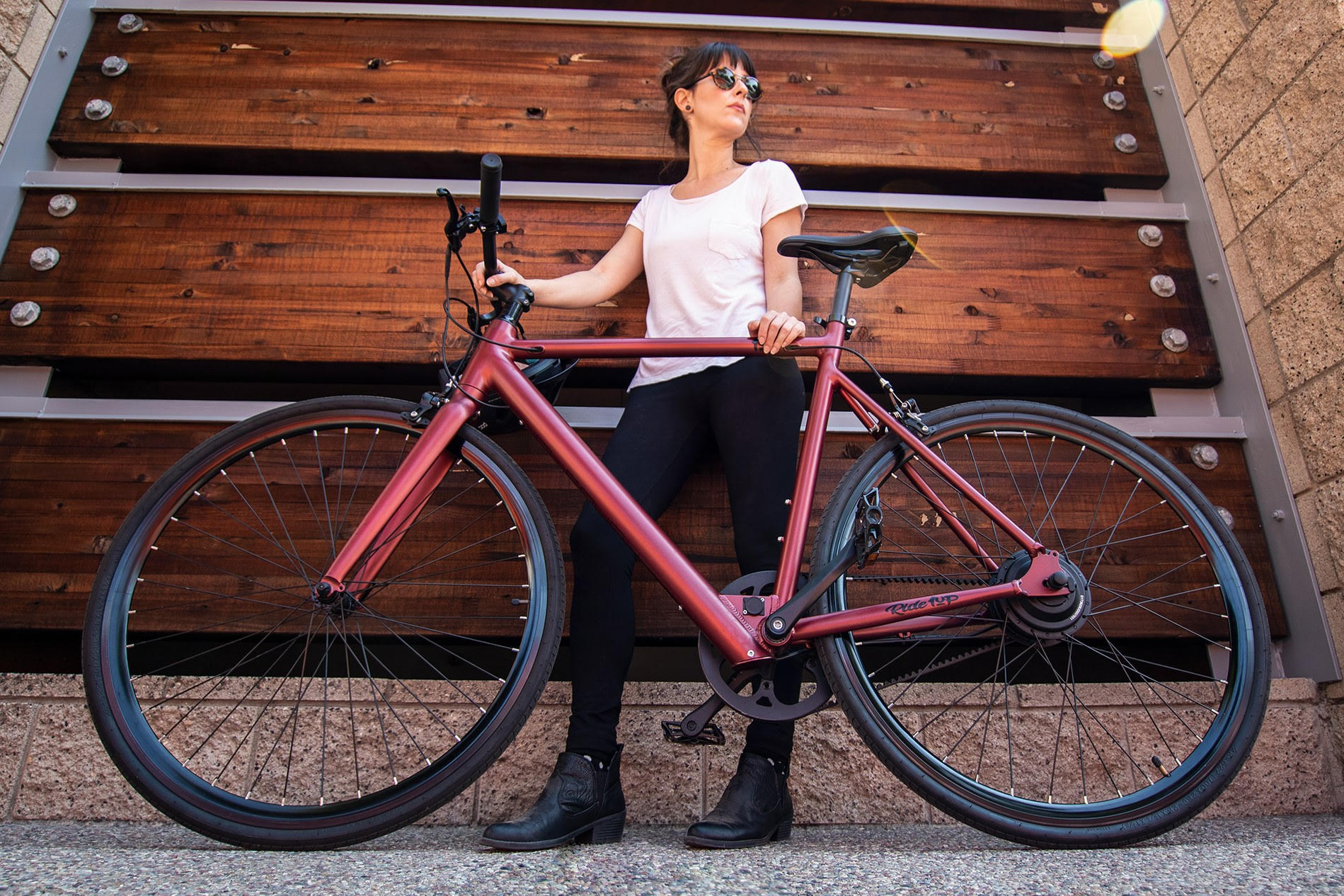 Enter for a chance to win an electric bike from Ride1UP
Enter for a chance to win an electric bike from Ride1UPSponsored A super-stylish Roadster e-bike up for grabs from Ride 1UP for one US-based reader
-
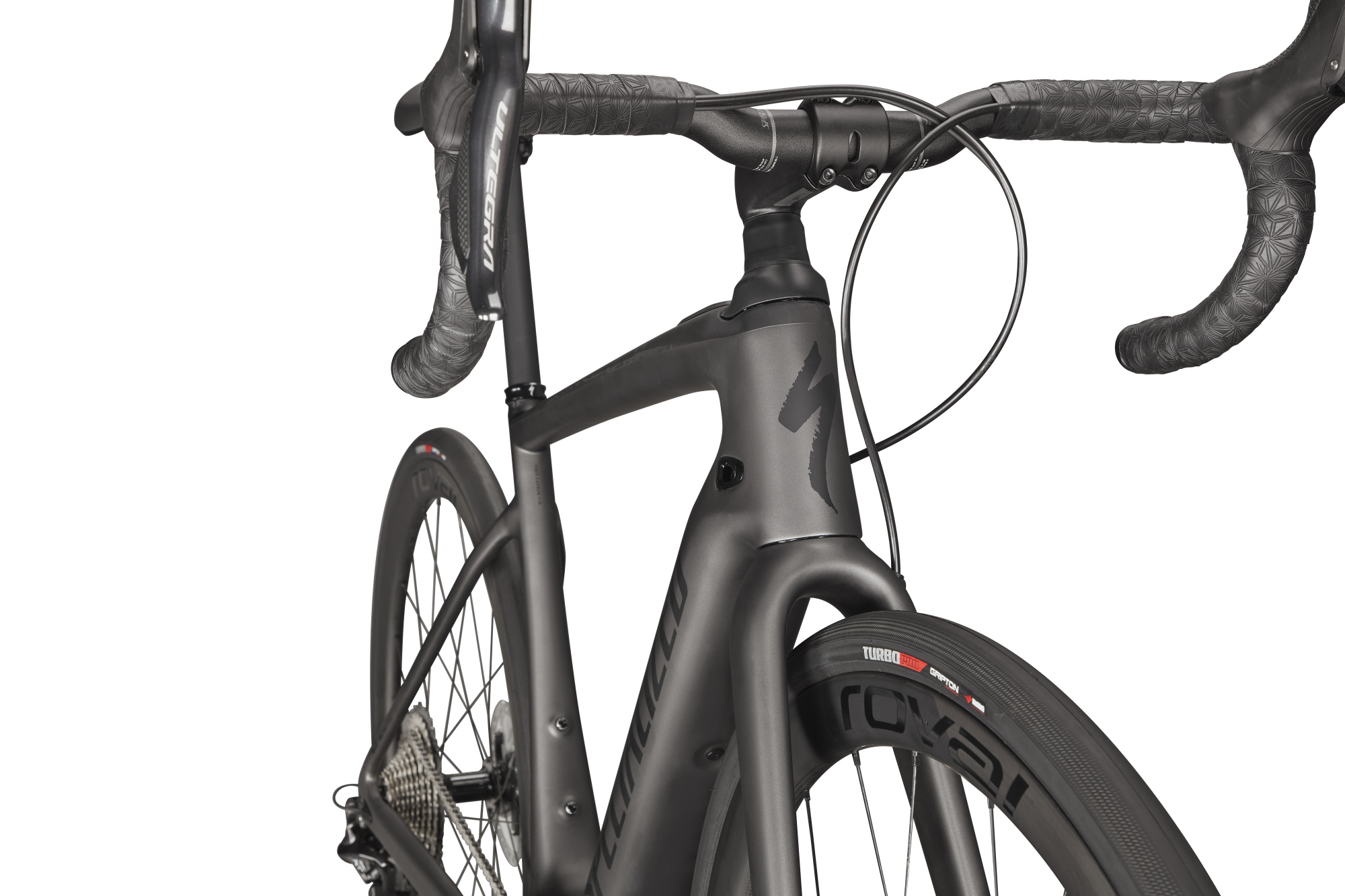 Here's how you can win a Specialized Turbo Creo SL worth £7500!
Here's how you can win a Specialized Turbo Creo SL worth £7500!This sleek, high performance e-bike worth £7500 could be yours by entering our free competition
-
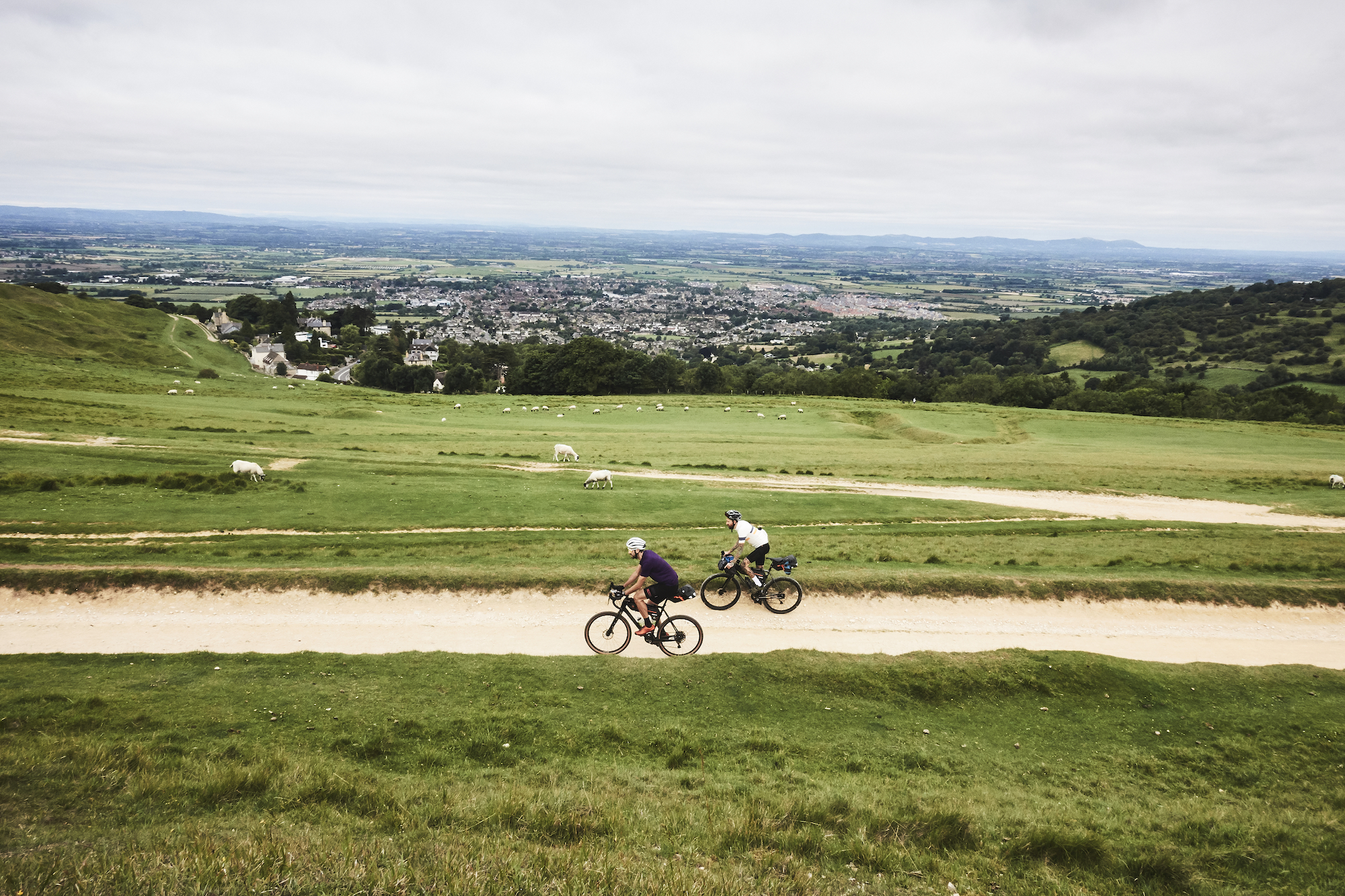 How to upgrade your riding routes
How to upgrade your riding routesKnow the feeling? It could be on a blistering hot sunny day in the fields, a snowy epic over the hills, or on a dawn blast around deserted city streets.
-
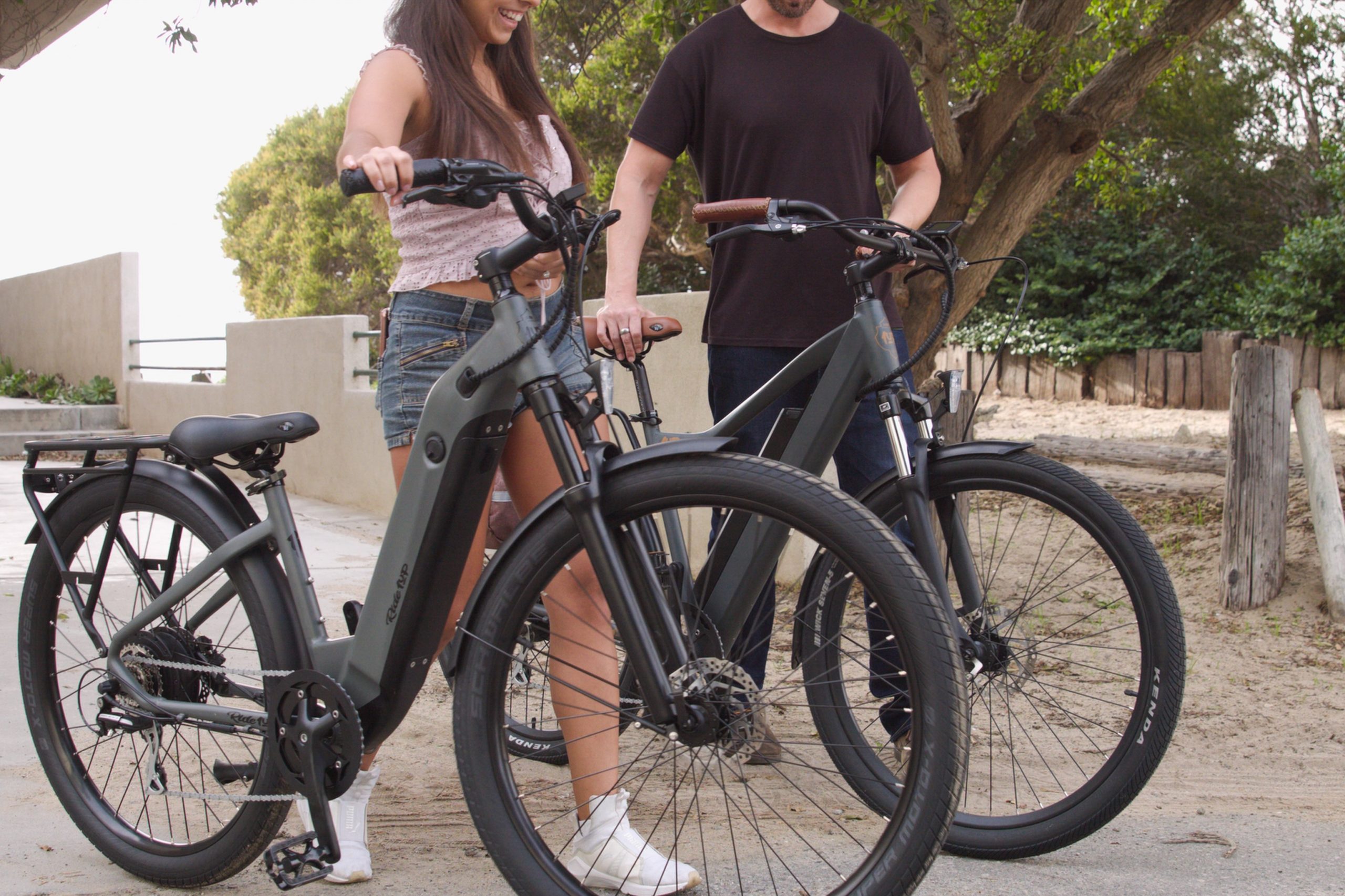 Why it’s time to invest in an eBike: stop sweating over high prices
Why it’s time to invest in an eBike: stop sweating over high pricesUS-based Ride1UP makes your money work harder [than you ever will]
-
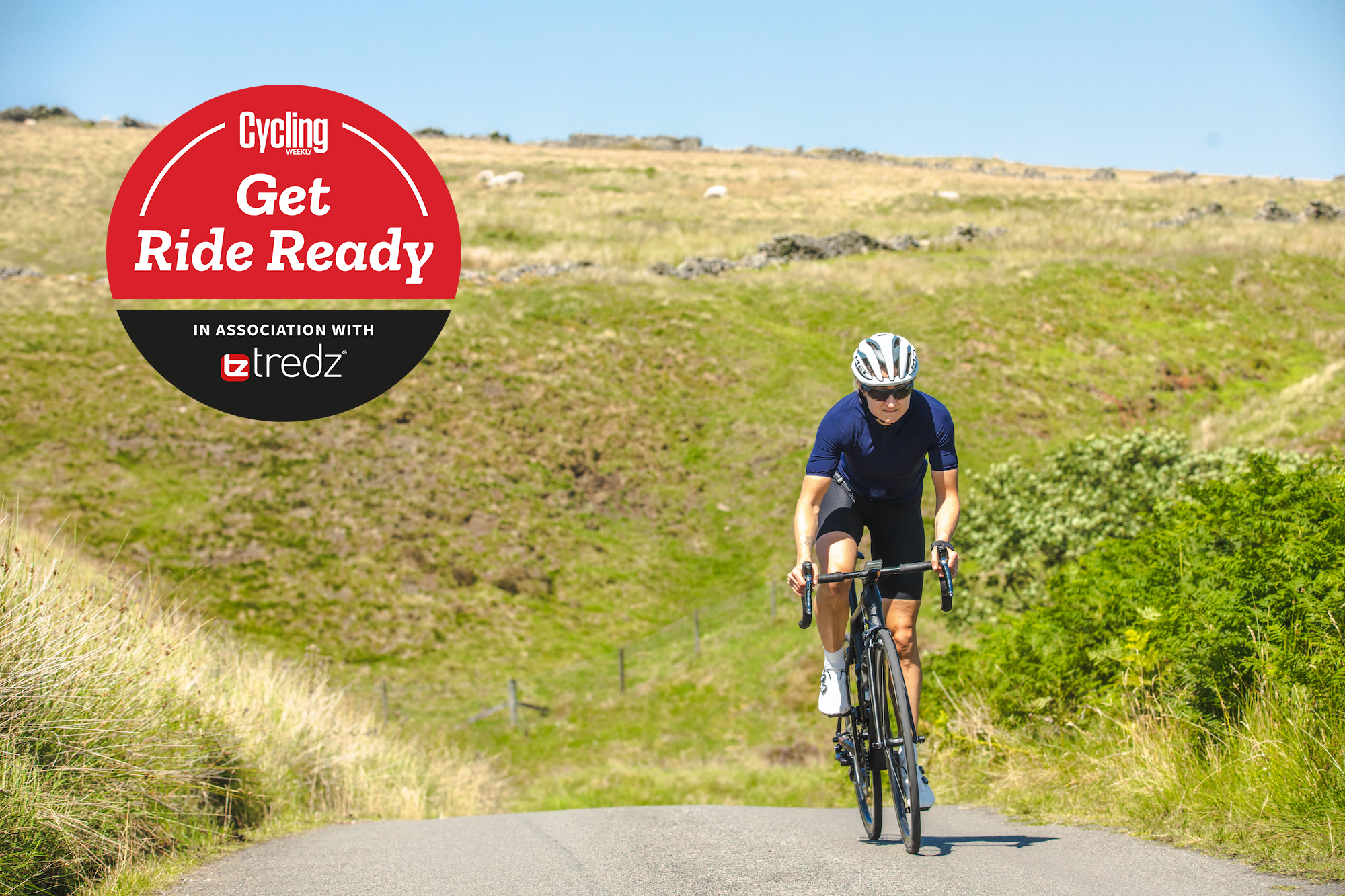 Back on your bike: what you need to enjoy longer rides
Back on your bike: what you need to enjoy longer ridesWith warm weather ahead, it is time to get back on the bike and indulge in long-distance rides this year, in association with Tredz
-
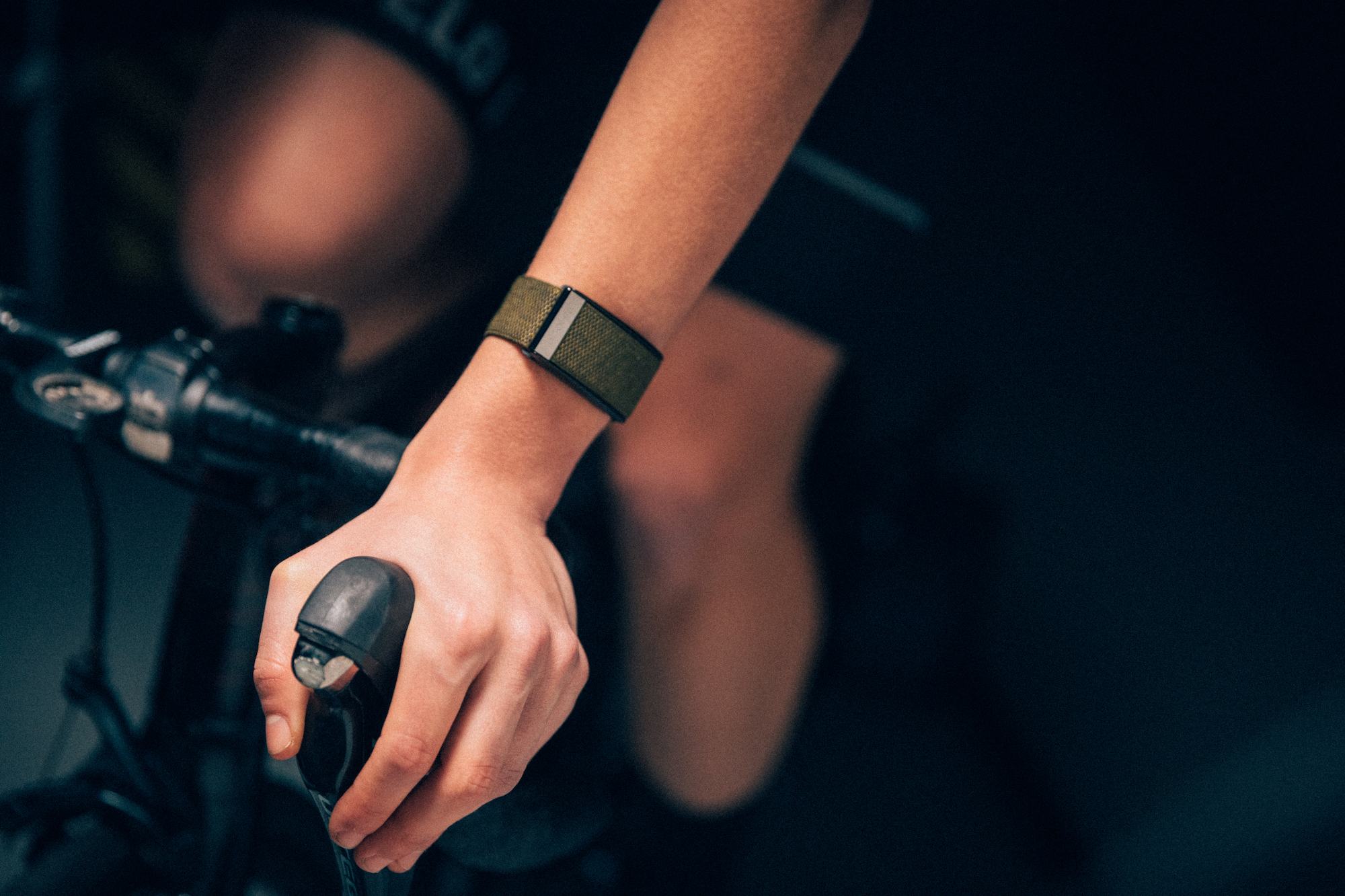 What is the WHOOP Strap 3.0 and why it’s built for the ultimate cycling performance?
What is the WHOOP Strap 3.0 and why it’s built for the ultimate cycling performance?The name WHOOP has been appearing across the cycling world in recent months, as one of the most popular pieces of fitness wearable tech available for cyclists right now.
-
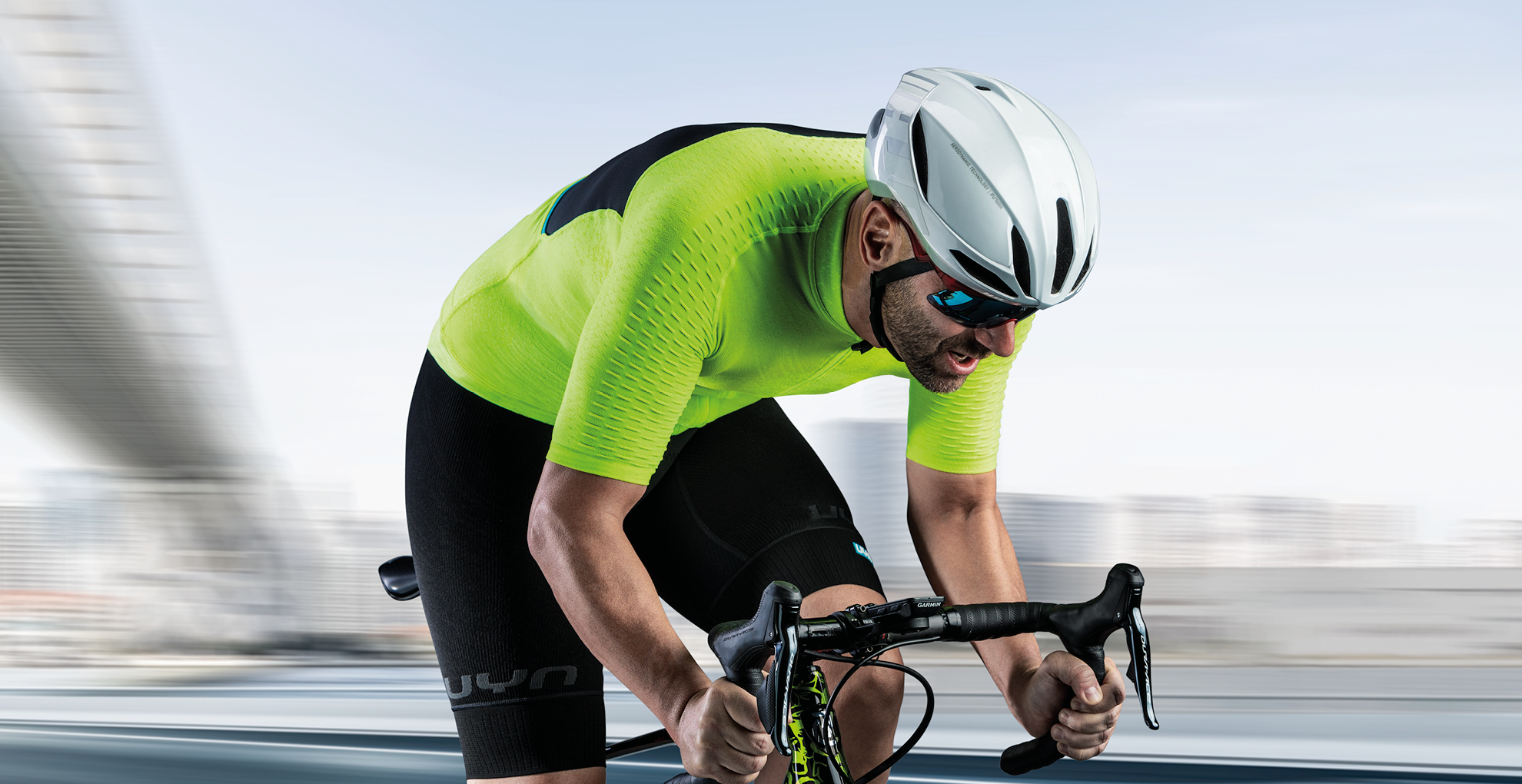 UYN’s revolutionary kit: aero, high performance and natural
UYN’s revolutionary kit: aero, high performance and naturalUYN presents an innovative new cycling kit woven with the latest technology and high-performance fabrics, for the ultimate blend between comfort and sustainability in the new AIRWING shirt and RACEFAST bib shorts.
-
 New Lapierre Pulsium increases tyre clearance and ride comfort
New Lapierre Pulsium increases tyre clearance and ride comfortLatest Lapierre endurance machine is designed for rough roads